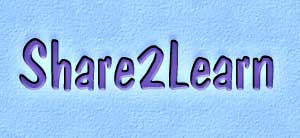 |
Language
Arts Ideas ~ Writing |
 |
Language
Arts Ideas ~ Writing |
|
Topical Writing Game This writing game works with almost any age group. Divide the class into teams. You give them a topic (such as Halloween); they have to provide details about that topic. For those of you who have to prepare kids for writing tests, you can have them create a reasonale statistic, expert quotation, etc. One of my co-teachers and I created this game last year to use with our eighth-graders. It works really well and is fun. |
|
Descriptive
Writing from Drawings Ask children to draw a picture of something they'd like to write about. Give them lots of time. Then gather them together and ask a volunteer to post his/her picture on the easel (or somewhere where all the students can see it clearly). The "artist" then stands behind the whole class and the class tells what they see in the picture and what they think the story is about. Then the artist explains the picture. Finally, the class makes statements about what was good and what details would have made the story/picture clearer to the viewer. When I taught first grade I had two or three artists present their pictures, then we had writing workshop with the assignment that they write the story of their picture and include details in their writing that would make it clearer to the reader. They could add these details to their picture as well. |
|
Responding to Student
Published Books I always put a page in the back of our published books that allows the reader to make a comment back to the writer. Kids love to see who actually read their books. The heading of the page was: Did you like my book? Write me a message. This is another way to show your writers that their writing does indeed have an audience. |
|
Traveling Book Bags I have a traveling tales bag with a book, stuffed animal, art supplies, and a journal in it. Each child takes a turn taking it home for one night and completing a journal entry. Sometimes, it is to share a favorite holiday tradition. Other times it will be to share how the child's name was chosen. Another entry is to share how you like to celebrate birthdays. After each child has a chance to complete their journal entry, we bind them into a classroom book. Then we start with a new topic. |
|
Classroom Campfire
Reading My third graders and I have one big sharing time at the end of each month. We make a big campfire (flashlights, logs, tissue paper fire) in the middle of the floor and we all gather around it. Then the children read something or part of something they've written during the month. The reader passes the flashlight for reading the text to the next reader after getting comments from friends. Sometimes this campfire takes three days at an hour a shot, but it's worth it in the sharing that goes on and in the ideas that are generated for new texts for writing. This is not a sharing for revision, but a celebratory celebration for the authors. |
|
Independent Writing
Choices Have students work together to create a charted list of possible writing choices they can refer to when making individual choices for writing. Students can brainstorm in small groups first and then add to a class list, or it can be done as a whole-class activity. Post the chart in a visible place, and add to it when new ideas come up. |
|
Letter Writing Collect a variety of stationery for students to use to write letters to other students as well as adults who work at the school. Keep a sample, addressed envelope with the writing materials to help students learn how to address envelopes. Have students mail their letters in a *REAL* metal mailbox... the kind with a flag... that is kept in the classroom. Near the end of each day, have a student deliver the mail. |
|
Story Writing When I taught 1st grade, I had students fold a 12" X 18" sheet of paper into thirds and draw the beginning, middle and end of a story in the three boxes. Then they used the pictures to help them write the story. The results were delightful and creative stories. Using this organizer, even my severely delayed kids could produce 3 logical connected sentences that sounded like a story. However, this was only one lesson of many mini-lessons experienced in the context of writing workshop, and I never led them to believe that this was the only way to write a story. It was simply a tool. These kids were used to writing without prompts or limits, and had extensive exposure to studies of genre and various elements of writing. |
Thanks for visiting Share2Learn!